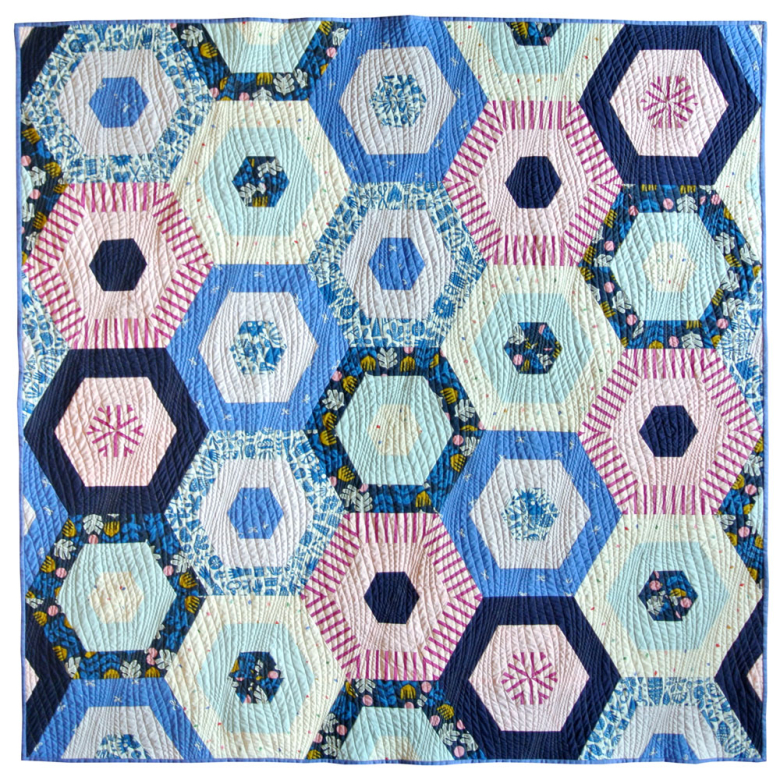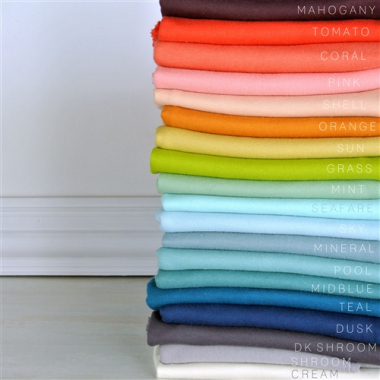From Suzy Quilts:
- Skill Level: Moderate
- 100% original pattern
- Downloadable PDF
- Includes instructions for a 54″ x 52″ Throw Quilt
- Multiple color palette options and a blank coloring page included
- The 60° Triangle Ruler linked to in the pattern is available for purchase here
- See more pics of the process on the blog!
- Get a spring-inspired Hexie Stripe quilt kit here!
- All SQ patterns assume yardage to be 42″ wide and seam allowances to be a ¼”
- WOF = width of fabric
The Hexie Stripe quilt pattern is perfect for those who love color and those who love fabric. With 9 different fabrics to mix and match you can make this quilt look wildly different simply based on your mood or preference.
Each finished strip is 2", which allows enough room for the fabric to truly shine. To maintain a certain level of contrast, I recommend using a variety of large-scale and small scale prints.
Personally I like to use multiple solid fabrics so that the pattern prints pop even more!
Another recommendation when picking fabric is to think about finding a mixture of fabrics that read as lights, mediums and darks in hue or saturation.
(Hue simply means color and saturation is the intensity or purity of that color.)
The quilt seen here uses highly saturated blues and purples along side light hues of lavender, blue and cream. Taking it a step further, when thinking about the three stripes that make up each of these hexies, I tried to group them with one light, one medium and one dark. Doing that, allows for the composition to look balanced throughout.
If you're new to quilting, and feel unsure about choosing fabric, try using this formula: 3 light fabrics, 3 medium fabrics and 3 dark fabrics. Of those 9 fabrics choose 1 or 2 large-scale, "loud" prints, 3-4 small-scale prints and have the rest of the fabrics be complimentary solids OR fabrics that read as solids (this would include very subtle prints).
Lay out all 9 fabrics before you make any cuts. Ask yourself, "Do these work as a family? Is there any one fabric that sticks out?" If so, remove it and add something else. With this design, most of the fabrics end up touching each other, so the last thing you want is one of the prints not playing nice with the group.














